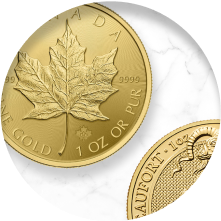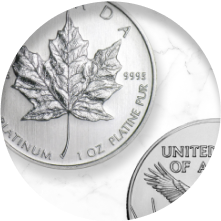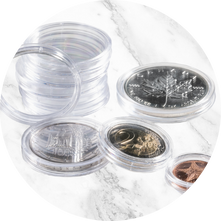Join us for the fifth episode of the Sprott Money Report, featuring Kam Hesari, a seasoned financial sales representative dedicated to securing your family's financial well-being. Kam brings a wealth of experience and holds prestigious designations such as Canadian Investment Manager (CIM) and Derivatives Market Specialist (DMS) from the Canadian Securities Institute. Tune in to our YouTube channel to gain valuable insights and expertise from Kam on navigating the financial landscape.
The United States is on the brink of a debt crisis of unprecedented proportions, with significant implications for both the economy and financial markets. The root of the crisis stems from unsustainable spending, compounded by substantial debt incurred during the global financial crisis and the COVID-19 pandemic. Currently, the government is struggling to manage its debt servicing obligations, leaving little fiscal wiggle room. This requires tough decisions on reducing spending or raising taxes. However, these measures are politically unpopular, often leading governments to defer the issue, figuratively kicking the can down the road. Unfortunately, these short-term measures only delay the inevitable, burdening future generations with even greater debt. Meanwhile, the Federal Reserve's efforts to support these bonds have failed to offset the losses sustained by central and commercial banks. Furthermore, investor confidence in purchasing more government debt remains shaky, magnified by ongoing deficits and existing debt troubles.
Surging Deficits and National Debt
In 2020, the U.S. government faced a huge $3.1 trillion deficit, the largest deficit in its history. This was followed by a $2.8 trillion deficit in 2021, the second largest on record. The spike in spending, especially on pensions, social security, healthcare, defence, and welfare, far outpaced revenue growth. To cover these deficits, the government issued trillions in debt, significantly increasing its liabilities. On January 1, 2020, the national debt was around $23.1 trillion. Today, it has skyrocketed to $34.8 trillion, a surge of over 40% since 2020!


Failing to address these issues could trigger a major debt crisis, eroding investor confidence in U.S. debt. Currently, about 40% of U.S. debt is held by foreign investors. The mounting debt crisis raises serious concerns about the supply and demand for bonds, as the government must sell record levels of bonds to fund its deficit, but the pool of buyers is shrinking. One major challenge is the need to maintain high interest rates to attract creditors. While necessary to ensure creditors receive a good return, this creates significant problems, especially for individuals facing higher mortgage payments and for corporations and the government refinancing debt. As the U.S. government grapples with maturing debts, it's resorting to issuing more treasuries and raising more money to cover these obligations. However, this strategy is unsustainable in the long term, as it leads to borrowing money to service debt, like a zombie company. This could create a debt snowball effect, where old debts are rolled over at higher rates, resulting in substantially higher interest payments. To make matters worse, most central banks are experiencing significant losses on their bond holdings, and the losses need financing, which originates from the central government borrowing more money, further worsening the supply-demand imbalance.
Ultimately, resolving the debt dilemma depends on how governments choose to handle their debts: either through strict repayment in hard money that retains its purchasing power, risking a depression, or through inflationary soft money that devalues currency. Historically, governments often opt for the latter, involving monetary expansion, to manage unsustainable debt burdens. The current situation parallels a late-cycle debt crisis, where there is an excess supply of debt and a shortage of buyers. This raises the risk of default or inflation as governments seek to repay their debts. Consequently, holding bonds now comes with increased risk, as there is a possibility of not receiving full repayment or receiving significantly devalued money. Avoiding a spike in interest rates during a supply-demand mismatch for bonds means printing money to buy these bonds, as fewer buyers are stepping up. This inevitably leads to currency debasement and inflation, a recurring theme throughout history.
Anticipated Inflation and Interest Rates
Inflation is poised to remain higher than originally expected, and the anticipated cuts to interest rates are likely to be smaller than initially projected. Moreover, the impact of previous rate hikes is starting to hurt the economy; as household savings erode, people are beginning to significantly cut back on spending.
Conclusion
The global economy is under serious threat as debt levels outpace income growth, impacting individuals, corporations, and nations worldwide. Unfortunately, the dominoes are starting to fall, with far-reaching consequences. As the looming U.S. debt rollover and unfunded pension liabilities are set to put significant pressure on financial resources in the coming years. The outlook is grim, with central government deficits not only large but expected to grow even faster. As debt service costs and other budget expenses compound, governments will be forced to issue more debt, creating a self-reinforcing cycle that could ultimately lead to market-imposed debt limits.
While the U.S. benefits from its status as a reserve currency, attracting substantial foreign investment in its bonds, the massive amount of debt issuance is raising serious questions about how long this privileged position can last. Furthermore, international sanctions that freeze dollar-denominated debt are making the dollar less appealing. As a result, more transactions are being conducted in alternative currencies, fostering a natural shift towards saving in these currencies as well.
As investors navigate these uncertain times, the appeal of gold as a hedge against economic volatility and currency devaluation remains strong. A strategic asset allocation, including precious metals, is crucial for safeguarding wealth and preserving purchasing power in today's complex global economy. Gold has proven to be a reliable safe haven in international finance, securing its place as the second-highest reserve asset for central banks, right behind the U.S. dollar. This preference for gold over bonds by central bankers underscores its timeless and universal appeal as a store of value. When evaluating which assets will retain value, gold stands out among a limited number of options. It is easily transferable, serves as a global form of currency, and does not rely on counterparty obligations. As J.P. Morgan famously said in 1912, “Gold is money. Everything else is credit.” Simply put, the U.S. debt crisis is poised to trigger a long-term rally in gold.
That said, most sophisticated investors are much more bullish on silver. As historically, silver has significantly outperformed gold in precious metals bull markets. During the 1970s stagflation, silver drastically outperformed gold as it surged over 3,500% within a decade. It shouldn't be surprising given silver's stronger negative correlation with the US dollar compared to gold. With the gold/silver ratio still out of whack, many investors are shifting their attention towards silver.
Don’t miss a golden opportunity.
Now that you’ve gained a deeper understanding about gold, it’s time to browse our selection of gold bars, coins, or exclusive Sprott Gold wafers.
About Sprott Money
Specializing in the sale of bullion, bullion storage and precious metals registered investments, there’s a reason Sprott Money is called “The Most Trusted Name in Precious Metals”.
Since 2008, our customers have trusted us to provide guidance, education, and superior customer service as we help build their holdings in precious metals—no matter the size of the portfolio. Chairman, Eric Sprott, and President, Larisa Sprott, are proud to head up one of the most well-known and reputable precious metal firms in North America. Learn more about Sprott Money.
Learn More
You Might Also Like:

















Share: